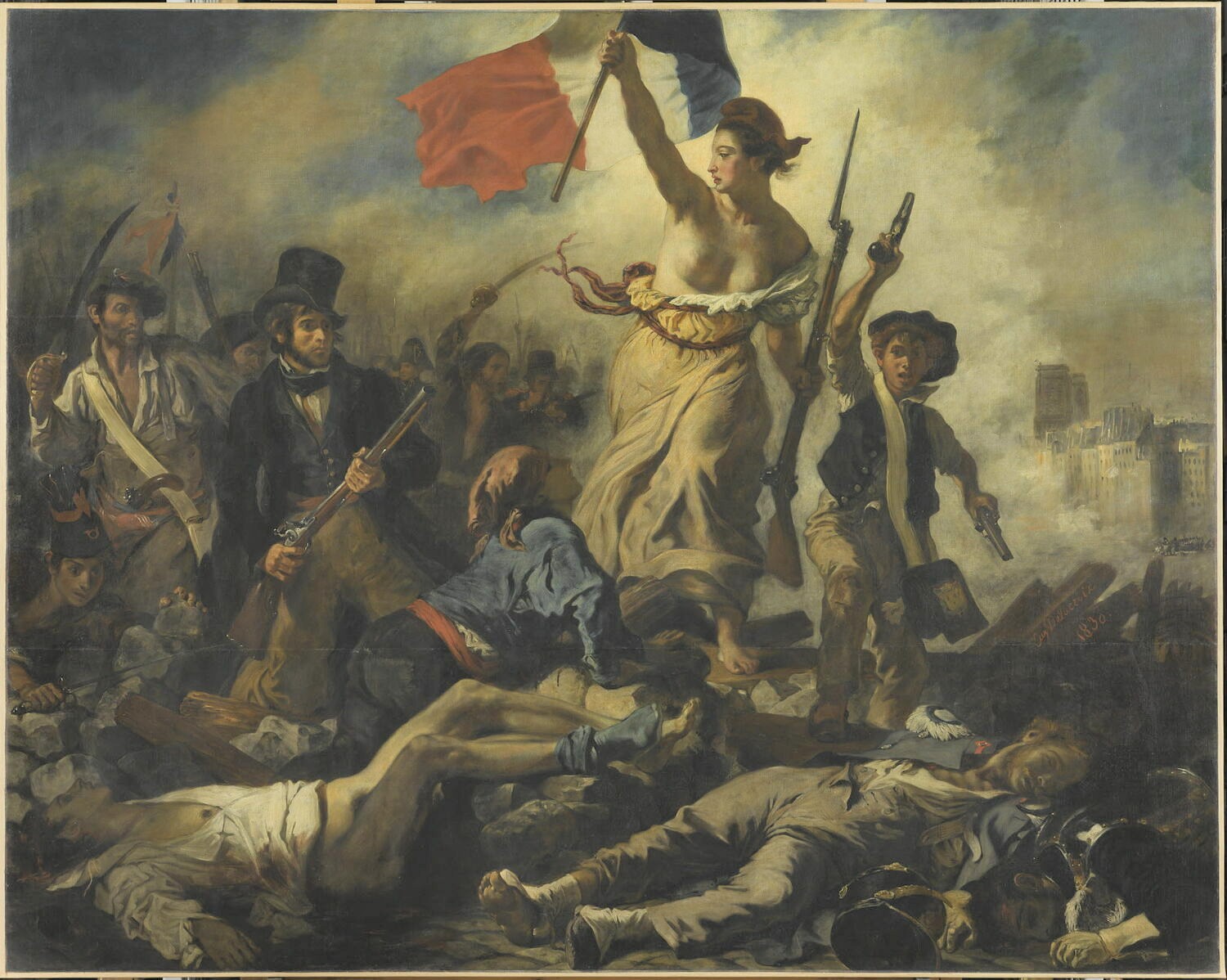+39 0669887260 | info@wucwo.org | Contact us
Art for Meditation - June 2025

Titian (Pieve di Cadore 1494 - Venice 1576), The Bacchanal of the Andrians, 1523/26, oil on canvas, 175 x 193 cm, Madrid, Prado Museum
Signs of Hope: The Young.
The scene that Titian depicts in this magnificent painting is taken from Greek mythology and shows us the feast of the inhabitants of the Aegean island of Andros, so favoured by Bacchus that the wine, a food sacred to him, flowed directly from a stream, as can be seen in the bottom left-hand corner, where a young man is drawing the heady drink with a jug.
Titian's painting - which was part of the cycle of five paintings all dedicated to the stories of the god Bacchus that the Duke of Ferrara Alfonso I d'Este had commissioned from a number of Renaissance painters (Titian, Dosso Dossi and Giovanni Bellini) - was placed with the others in a room in the city castle called the “Camerino delle pitture” (Chamber of Paintings) that soon became famous among all lovers of art and painting in particular.
Art for Meditation - May 2025
Théodore Géricault (Rouen 1791 - Paris 1824), The Raft of the Medusa, 1818/19, oil on canvas, 491 x 716 cm, Paris, Musée du Louvre
Signs of Hope: Migrants.
The huge canvas we see refers to an event that took place on 2 July 1816 and caused a great commotion in Paris and throughout France. On that day, the frigate Méduse ran aground in the Atlantic Ocean about 160 km off the coast of present-day Mauritania. After several attempts to refloat the ship, more than 250 people were saved by climbing into lifeboats on 5 July; the remaining 150 found a place on a large raft and wandered in the ocean for 15 days, until the only 15 who were still alive were rescued by a boat.
Art for Mediatation - April 2025
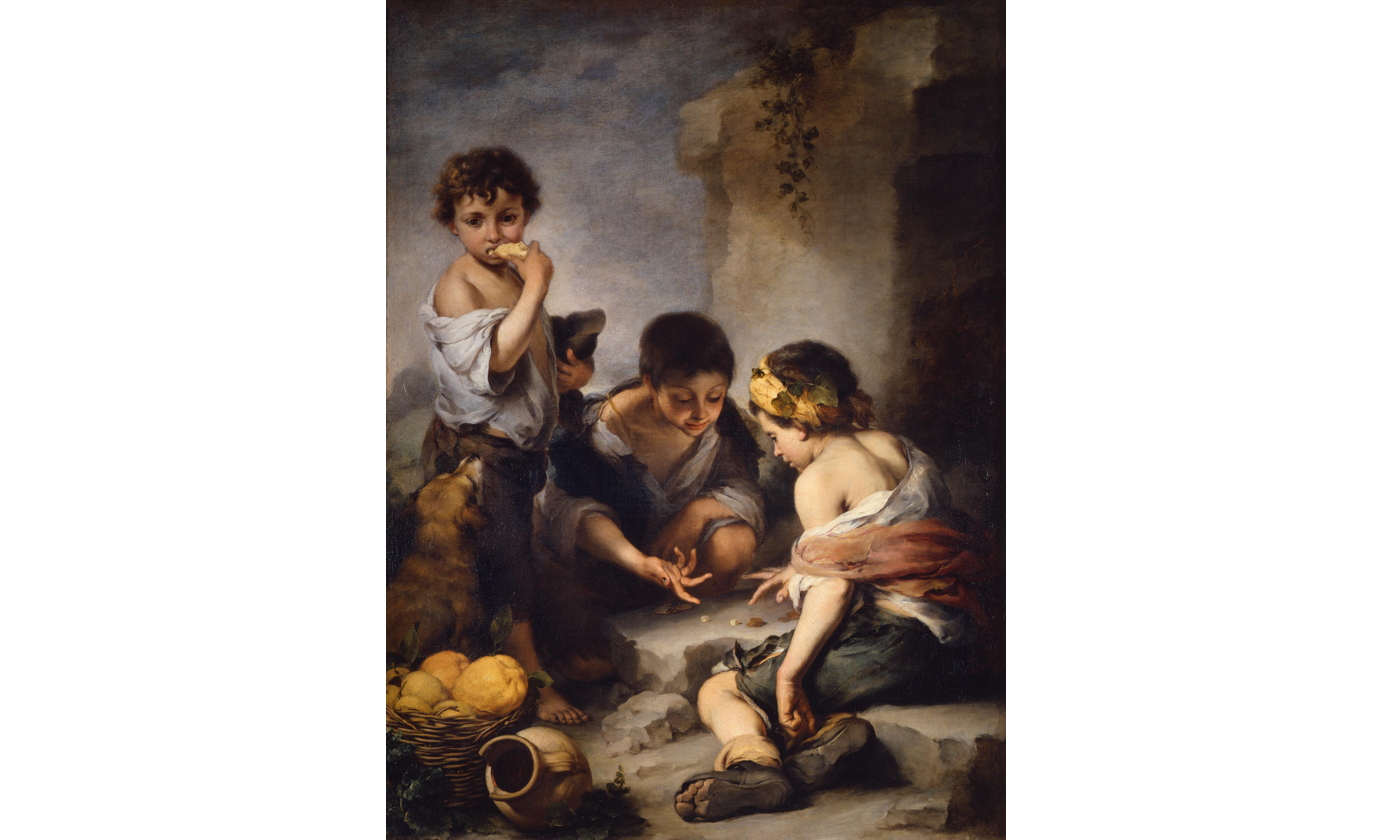
Bartolomé Esteban Murillo (Seville 1618 - 1682), Boys playing dice, around 1675/80, oil on canvas, 146 x 108.5 cm, Munich, Alte Pinakothek
Signs of hope: the poor
There are several paintings that the great Spanish painter dedicated to the childhood which he could probably observe every day on the streets of Seville. They are vivid testimonies of the great poverty in which the majority of the population of Andalusia's most important city lived at the end of the 17th century.
This magnificent painting also presents this reality to us. It does so, first of all, by showing how the three protagonists are dressed: threadbare, dirty clothes, barefoot or wearing shoes with soles so worn that half their feet show through. The very fact that they spend their time on the street playing dice with the few coins we are able to see, tells us of a degraded human environment, where the little ones are left at the mercy of the street, with all the dangers that this entails.
Art for Mediatation - March 2025

Image is used from www.hermitagemuseum.org, courtesy of The State Hermitage Museum, St. Petersburg, Russia
Peter Paul Rubens (Siegen 1577 - Antwerp 1640), Roman Charity (Cimon and Pero), c. 1612, oil on canvas (transferred from panel, 140.5 x 180.3 cm, St. Petersburg, Hermitage Museum
Signs of hope: the prisoners.
The story that this beautiful painting by Rubens illustrates is told in the ‘Nine Books of Memorable Sayings and Facts’ by the Latin historian Valerius Maximus. A Roman woman, Pero, secretly breastfeeds her father, Cimon, who has been imprisoned and condemned to death by starvation. She is discovered and denounced by a guard, but her courage and filial piety so impress the prison officials that they grant her father's release.
Art for Mediatation - February 2025
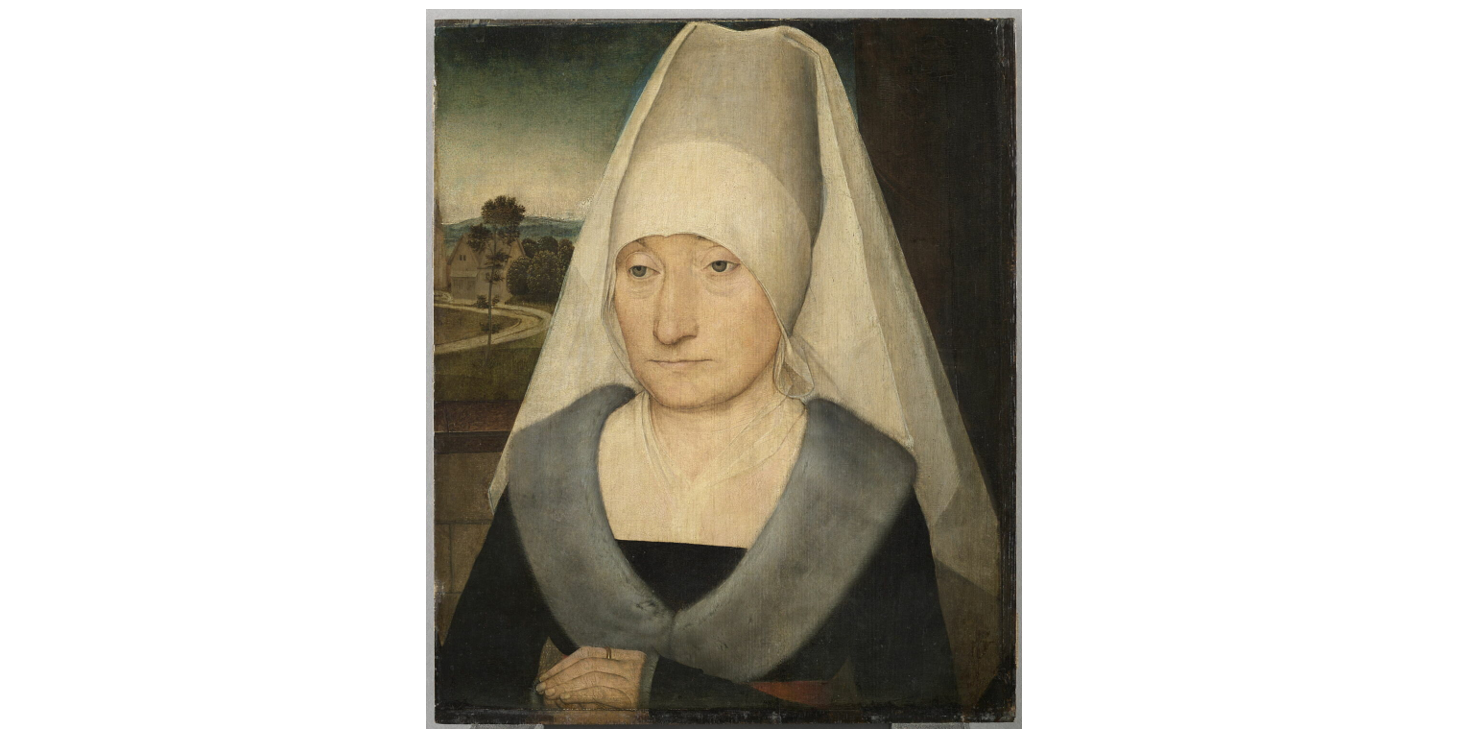
Hans Memling (Selingenstadt c. 1430 - Bruges 1494), Portrait of an Elderly Woman, 1470-72, oil on panel, 35 x 29 cm, Paris, Musée du Louvre
Signs of hope: the elderly.
It is not all that often in the world of painting that one comes across a portrait of an elderly person. There are many reasons for this, such as the fact that centuries ago the average age was much lower and there were far fewer elderly people than today, or because it was believed that beauty fades with age and therefore, for an art that tended towards perfection, the elderly person was not an interesting subject.
The beautiful portrait painted by the great Flemish painter Hans Memling in the second half of the 15th century is certainly an interesting example that tells us several things about old age and the consideration it might have received at that time.
Art for Mediatation - January 2025

Louise-Élisabeth Vigée-Le Brun (Paris 1755 - 1842), Madame Vigée-Le Brun and her daughter, Jeanne-Lucie-Louise, known as Julie, 1789, oil on panel, 130 x 94 cm, Paris, Musée du Louvre
The signs of hope: generating new sons and daughters
In the first months of this new year, we allow ourselves to be accompanied by the Jubilee spirit that the whole Church intends to live. We are doing so with a particular slant: we intend to propose for reflection and contemplation some figures of women who embody, in the representations made by artists from different eras and places, what Pope Francis called - in the bull of Jubilee proclamation - ‘signs of hope’.
Art for Mediatation - December 2024
 Heinrich Aldegrever (Paderborn 1502 - Soest ca. 1560), The Joy, 1549, engraving on paper, 7.2 x 5.2 cm, Paris, Musée du Louvre
Heinrich Aldegrever (Paderborn 1502 - Soest ca. 1560), The Joy, 1549, engraving on paper, 7.2 x 5.2 cm, Paris, Musée du Louvre
The Virtues: Joy
We end our presentation of the virtues with which we have accompanied this year 2024 with an engraving by a refined German artist. In 1549 he engraved 14 small plates each representing a vice or a virtue.
We do not know who commissioned this work and for what purpose, but we are struck by the choice to entrust the description of each subject to a simple and apparently poor medium. The engraving, in fact, unlike the painting that in the use of colour finds a powerful ally for the rendering of figures and moods, plays everything on line and luminosity that is due to the lesser or greater incidence of solids and voids. Aldegrever was completely satisfied with the outcome of his work, so much so that in each of the 14 engravings we find both the year of composition and the initials of his name.
Art for Meditation - November 2024
Peter Paul Rubens (Siegen 1577 - Antwerp 1640), The Triumph of Truth, 1622-25, oil on canvas, 394 x 160 cm, Paris, Musée du Louvre
The Virtues: Truth.
The painting is the last of 24 that Rubens painted to decorate the western gallery on the first floor of the Luxembourg Palace, built in those same years by Maria de' Medici, Queen of France and wife of King Henry IV, who wanted to make it her residence.
Art for meditation - October 2024
Eugène Delacroix (Charenton-Saint-Maurice 1798 - Paris 1863), Liberty Leading the People, 1830, oil on canvas, 360 x 325 cm, Paris, Musée du Louvre
The Virtues: Liberty.
Eugène Delacroix's famous painting takes its cue from an event that really took place: in July 1830, from the 27th to the 29th, the people of Paris rebelled against the government that King Charles X had set up the year before. They made barricades and forced the king to dismiss the government, cancel the liberticidal laws that had been enacted and finally abdicate by fleeing to England.
Art for Meditation - September 2024

Luca Giordano (Naples 1634 - 1705), Allegory of the divine Wisdom, 1680 circa, oil on canvas, cm 138,5 x 65,2, London, National Gallery
The virtues: the divine Wisdom
Luca Giordano was called by the marquis Francesco Riccardi to fresco some rooms built to expand the Florentine palace that the rich family had bought in 1659 from the Medici, their allies. This model, or detailed oil study, is part of a group of 12 that Giordano made in preparation for the ceiling frescoes of Palazzo Medici Riccardi in Florence in 1682-85. The general theme of these highly elaborate and impressive frescoes is the progress of humanity through wisdom and virtue.
Art for meditation - August 2024
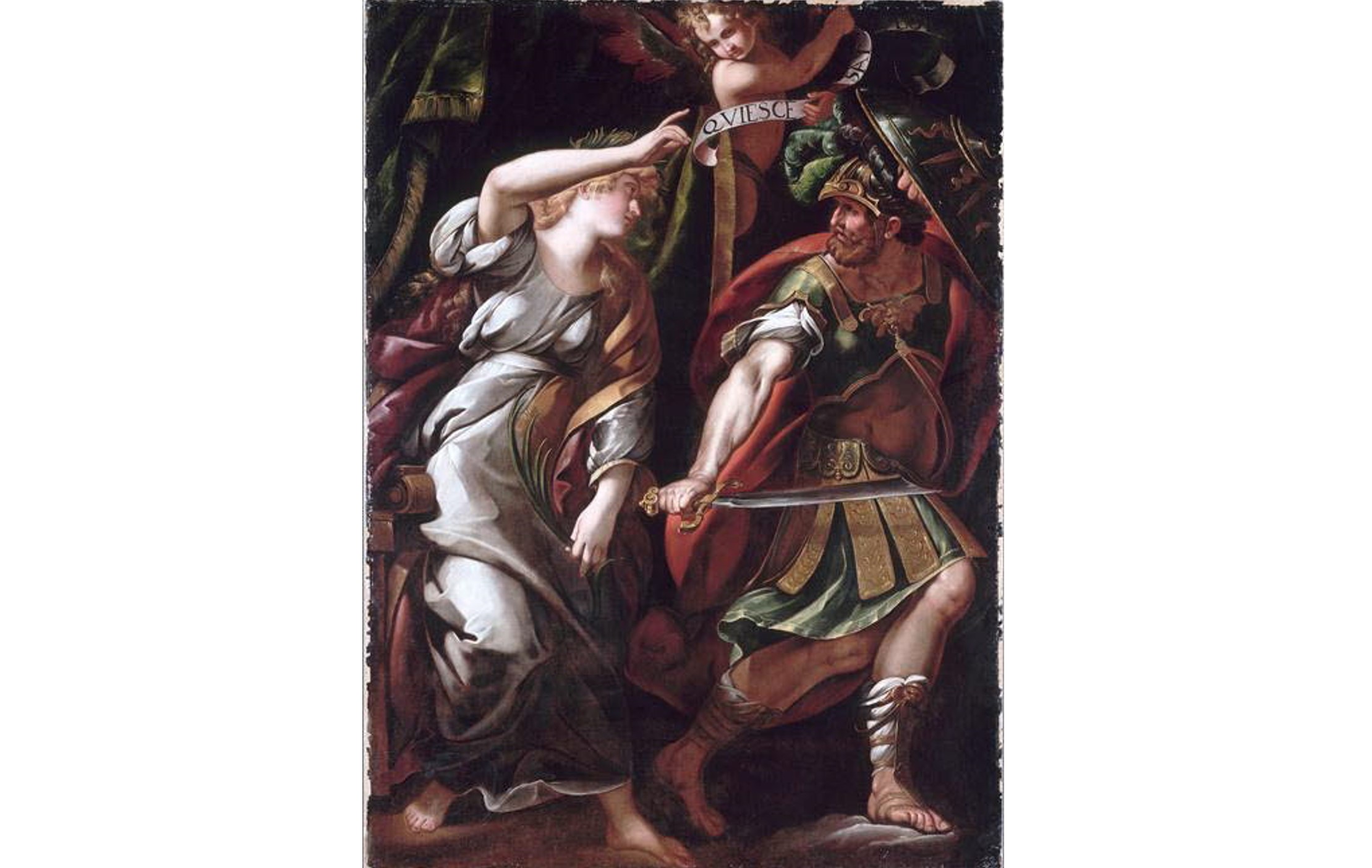
Giulio Cesare Procaccini (Bologna 1574 - Milan 1625), Peace chasing War, c. 1610, oil on canvas, 235 x 171 cm, Paris, Musée du Louvre
The Virtues: Peace
The beauty and power of this painting lies in the contrast between the two protagonists on the canvas, Peace and War, personified respectively by a young woman and a mature man with a beard.
The delicate and gentle figure of Peace occupies the left side of the painting, while War occupies the right side. But we notice a movement of the two figures, from left to right, which tells us that soon Peace will be the only protagonist, because War is about to leave the scene.
Art for meditation - July 2024
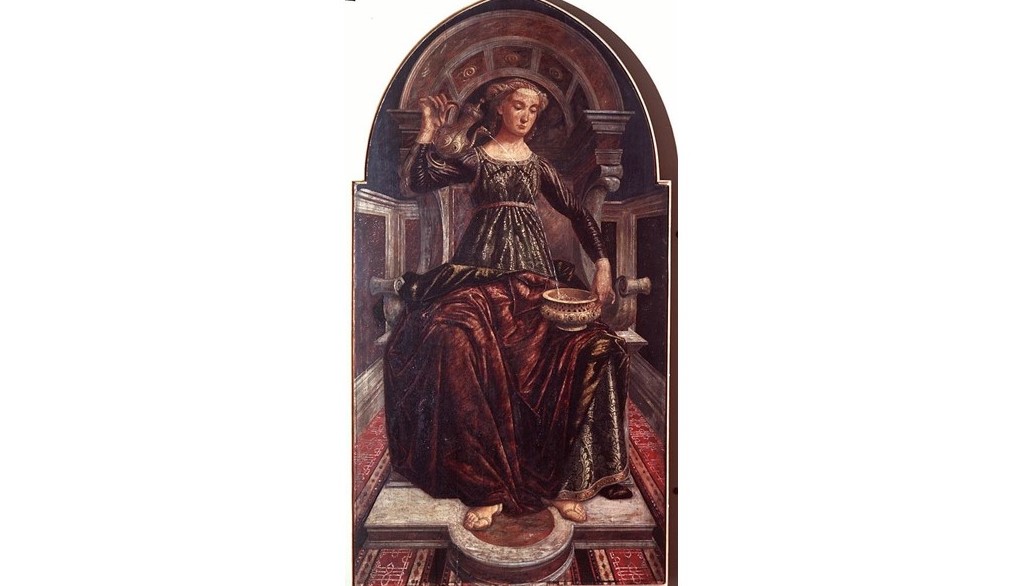
Piero del Pollaiolo (Florence 1441 - Rome 1496), La Temperanza, 1470, tempera grassa on panel, 168 x 90.5 cm, Florence, Uffizi Museum
The virtues: the Temperance
We would also like to begin this reflection with the words of Pope Francis, who dedicated the audience on Wednesday 17 April to the last of the "cardinal" virtues, the Temperance. And he reminded us that it “is the virtue of the right measure. In every situation, one behaves wisely, because people who act always moved by impulse or exuberance are ultimately unreliable. People without temperance are always unreliable. In a world where many people boast about saying what they think, the temperate person instead prefers to think about what he says. Do you understand the difference? Not saying whatever comes into my mind, like so… no: thinking about what I have to say. He does not make empty promises but makes commitments to the extent that he can fulfil them.”


